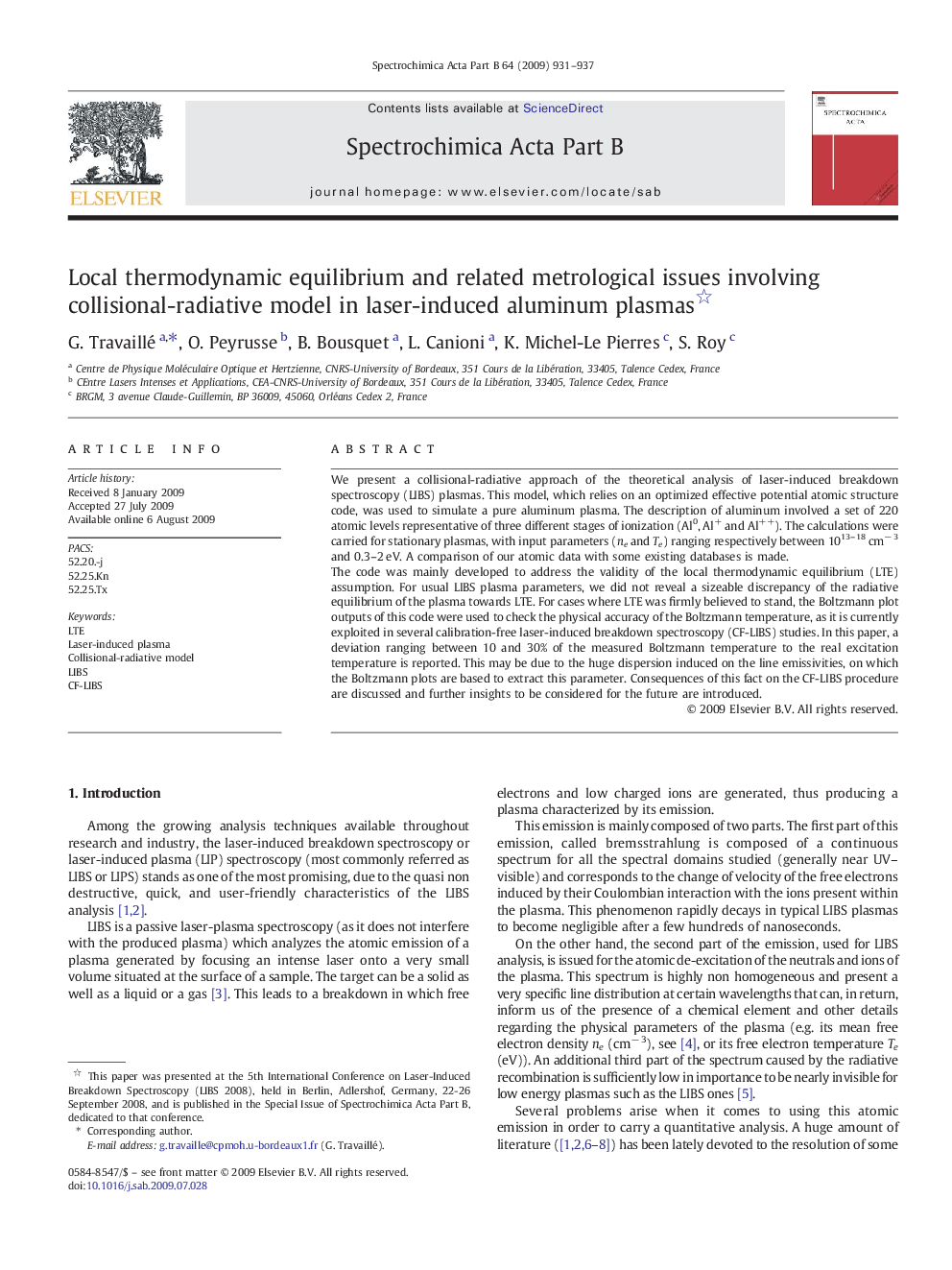| Article ID | Journal | Published Year | Pages | File Type |
|---|---|---|---|---|
| 1240786 | Spectrochimica Acta Part B: Atomic Spectroscopy | 2009 | 7 Pages |
We present a collisional-radiative approach of the theoretical analysis of laser-induced breakdown spectroscopy (LIBS) plasmas. This model, which relies on an optimized effective potential atomic structure code, was used to simulate a pure aluminum plasma. The description of aluminum involved a set of 220 atomic levels representative of three different stages of ionization (Al0, Al+ and Al++). The calculations were carried for stationary plasmas, with input parameters (ne and Te) ranging respectively between 1013–18 cm− 3 and 0.3–2 eV. A comparison of our atomic data with some existing databases is made.The code was mainly developed to address the validity of the local thermodynamic equilibrium (LTE) assumption. For usual LIBS plasma parameters, we did not reveal a sizeable discrepancy of the radiative equilibrium of the plasma towards LTE. For cases where LTE was firmly believed to stand, the Boltzmann plot outputs of this code were used to check the physical accuracy of the Boltzmann temperature, as it is currently exploited in several calibration-free laser-induced breakdown spectroscopy (CF-LIBS) studies. In this paper, a deviation ranging between 10 and 30% of the measured Boltzmann temperature to the real excitation temperature is reported. This may be due to the huge dispersion induced on the line emissivities, on which the Boltzmann plots are based to extract this parameter. Consequences of this fact on the CF-LIBS procedure are discussed and further insights to be considered for the future are introduced.
